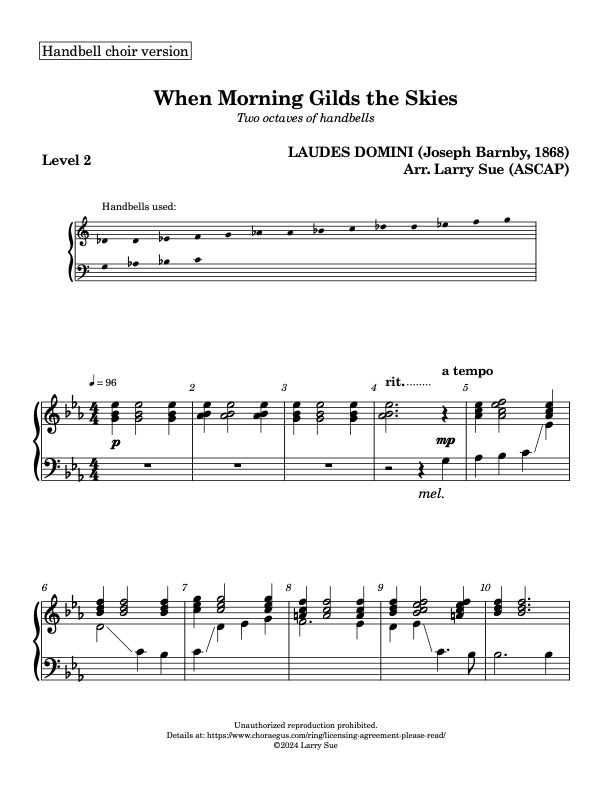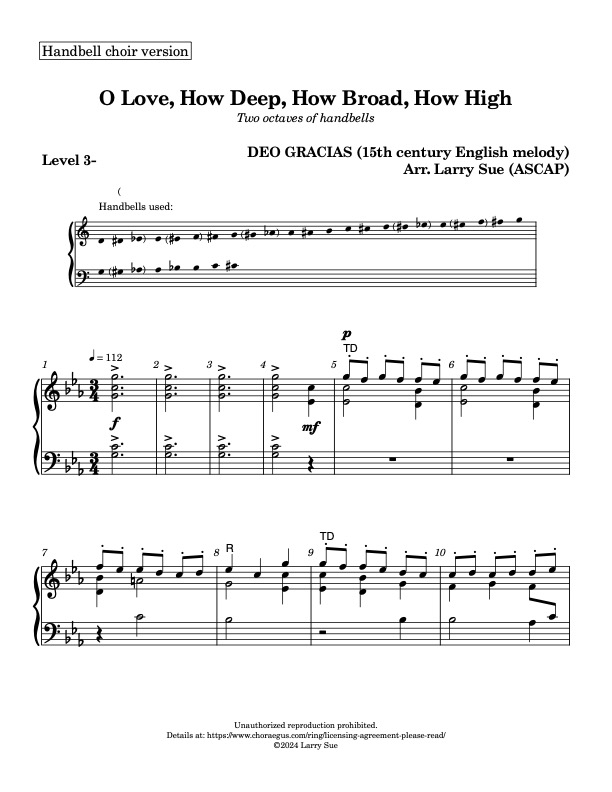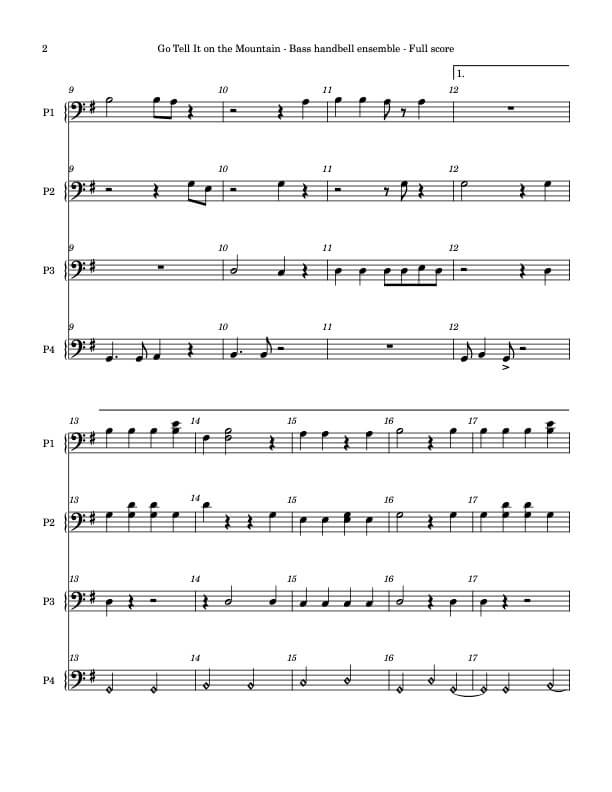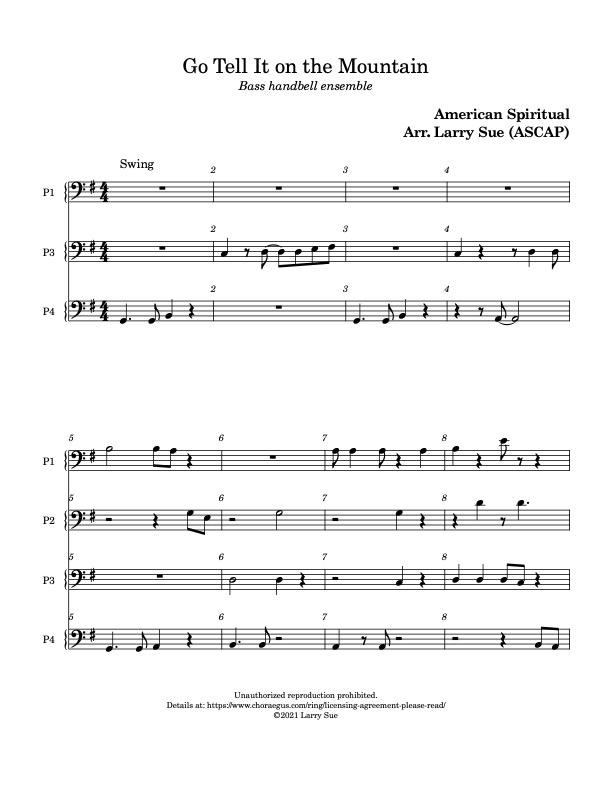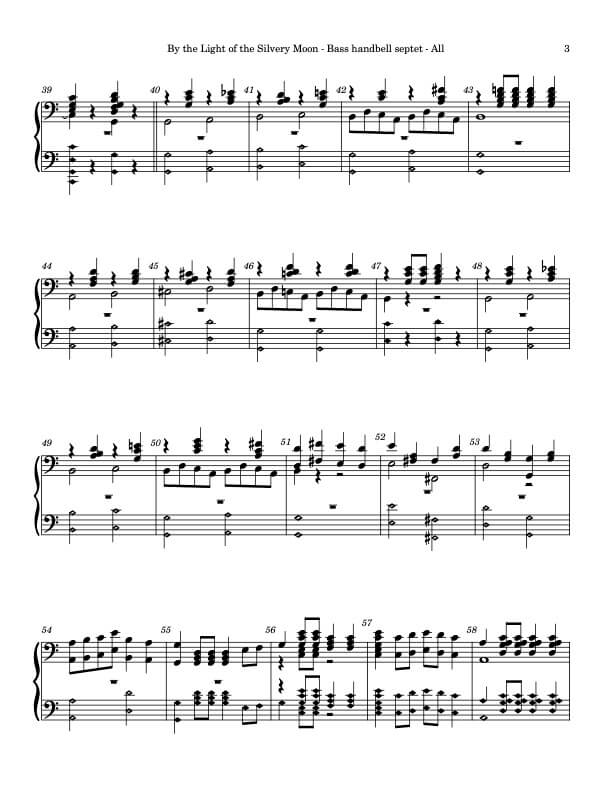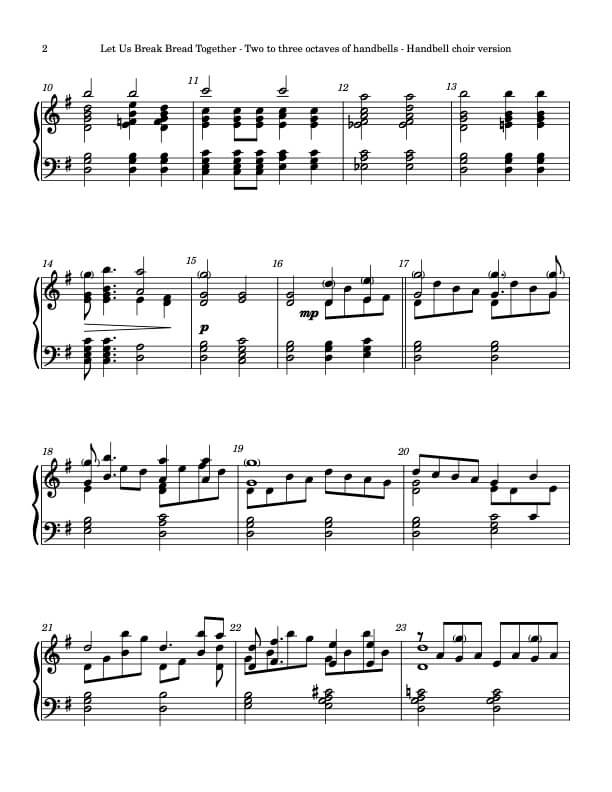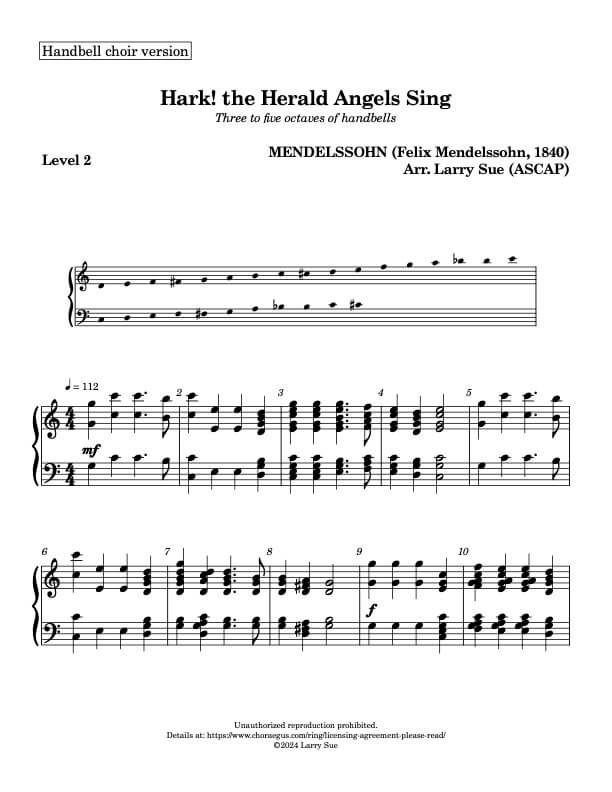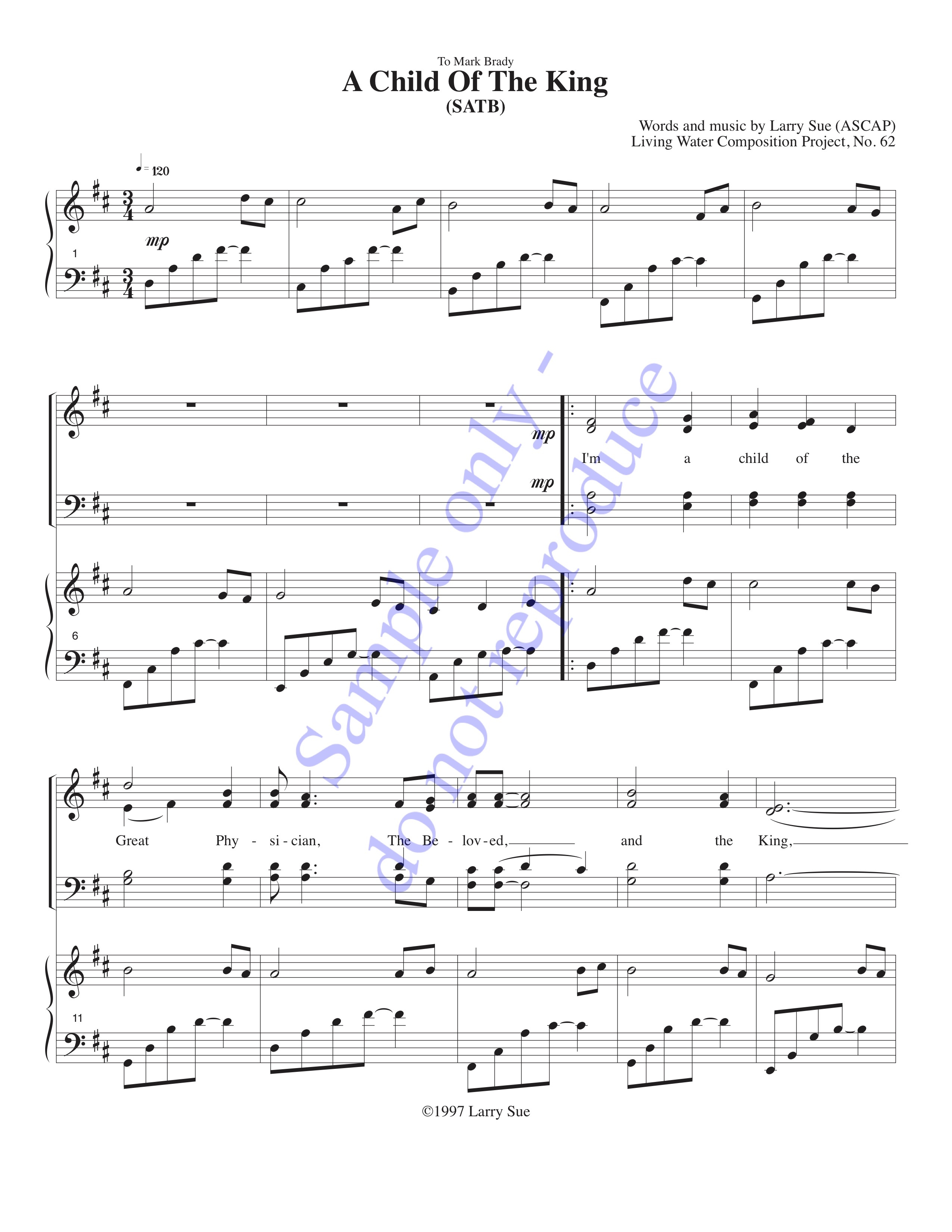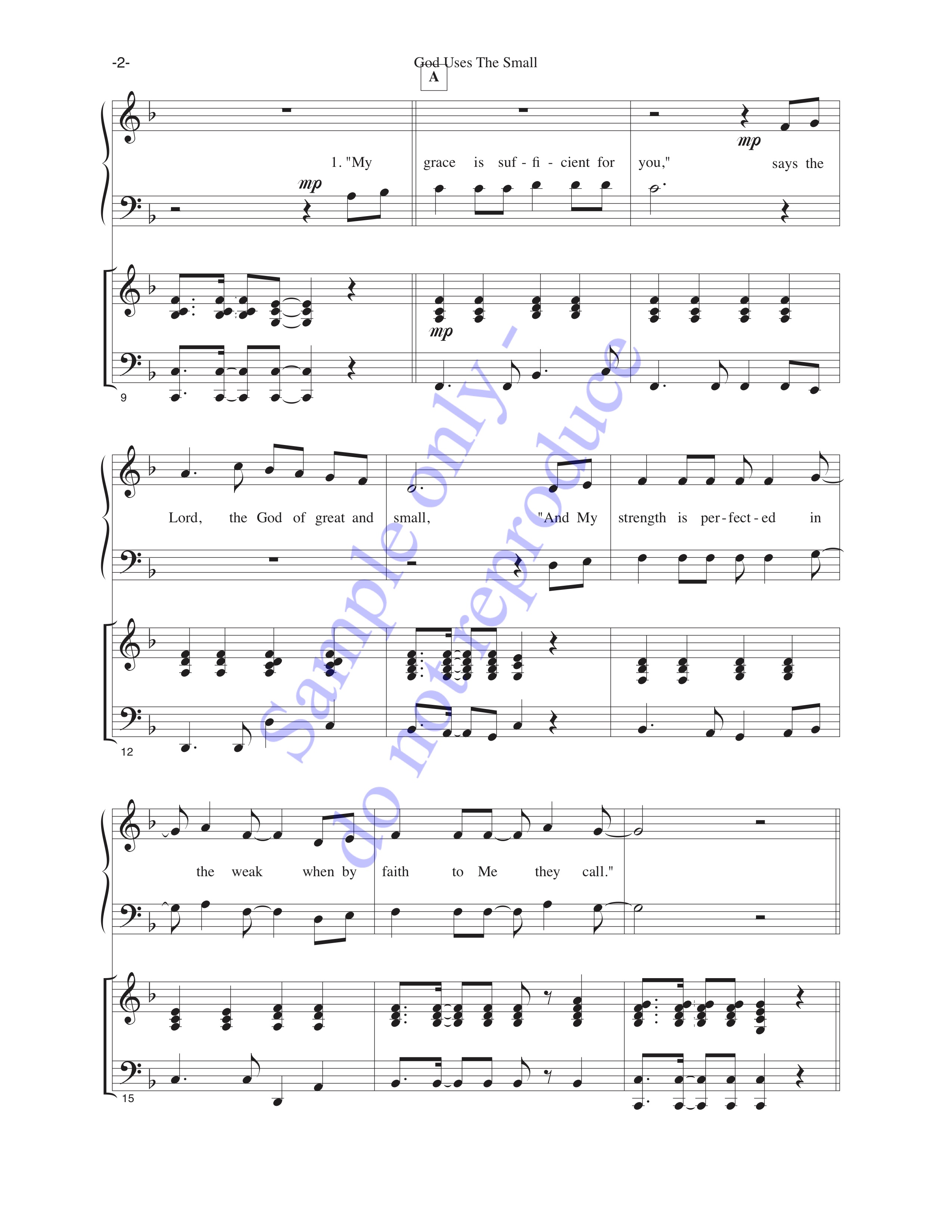Sometimes you might not have all the bells that are required to play one of our eight-bell scores. Don’t let this stop you. See whether one of the solutions below works for you.
If your set of bells is two or more octaves:
You should be able to transpose the bells in the score to fit in the bells that you have. From what we’ve seen, this usually means you have a two-octave set, but would like to play a score that has an Ab6 or an A6. To do this transpose the set of bells needed, and then play them as if they were the bells on the score. For instance, suppose the music calls for G5-A5-B5-C6-D6-E6-F6-A6 (and you don’t have the A6).
- If you have a two-octave set, you can transpose everything downward to F5-G5-A5-Bb5-C6-D6-Eb6-G6. Assuming you’re playing as a quartet, you can do this:
Player 1 plays F5-G5, but reads G5-A5 Player 2 plays A5-Bb5, but reads B5-C6 Player 3 plays C6-D6, but reads D6-E6 Player 4 plays Eb6-G6, but reads F6-A6 - For a piece that asks for G5-Bb5-C6-D6-Eb6-F6-G6-Ab6 when you don’t have the Ab6 you can try:
Player 1 plays F#5-A5, but reads G5-Bb5 Player 2 plays B5-C#6, but reads C6-D6 Player 3 plays D6-E6, but reads Eb6-F6 Player 4 plays F#6-G6, but reads G6-Ab6
If you need to ring with bells lighter than G5:
Transposing upward to the range C6-C7 will make this work:
-
Player 1 plays C6-D6, but reads G5-A5 Player 2 plays E6-F6, but reads B5-C6 Player 3 plays G6-A6, but reads D6-E6 Player 4 plays Bb6-C7, but reads F6-G6
If you have a one-octave chromatic set of bells:
We know of a few people who have one octave of bells (with all the black keys) to play. That certainly isn’t a show-stopper, because most of our eight-bell repertoire is written for G5-G6. Because one-octave sets sold by the modern manufacturers have the range C5-C6, you’d have to use this transposition:
-
Player 1 plays C5-D5, but reads G5-A5 Player 2 plays E5-F5, but reads B5-C6 Player 3 plays G5-A5, but reads D6-E6 Player 4 plays Bb5-C6, but reads F6-G6
If you have a one-octave diatonic set of bells:
Then you have C5-D5-E5-F5-G5-A5-B5-C6 (no flats and no sharps). You can still play any of our eight-bell scores that use G5-G6 and are in G major (one sharp). This also works with the sets of eight colored bells, or even a child’s xylophone:
-
Player 1 plays C5-D5, but reads G5-A5 Player 2 plays E5-F5, but reads B5-C6 Player 3 plays G5-A5, but reads D6-E6 Player 4 plays B5-C6, but reads F#6-G6


